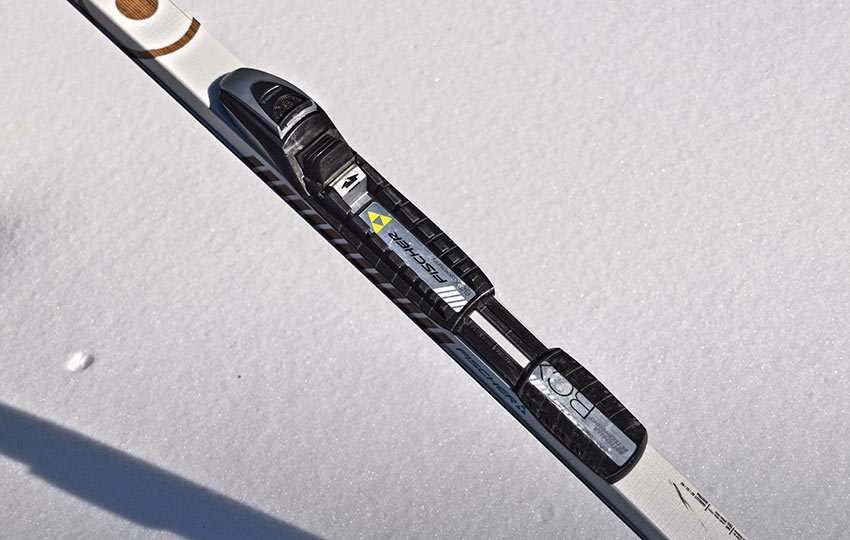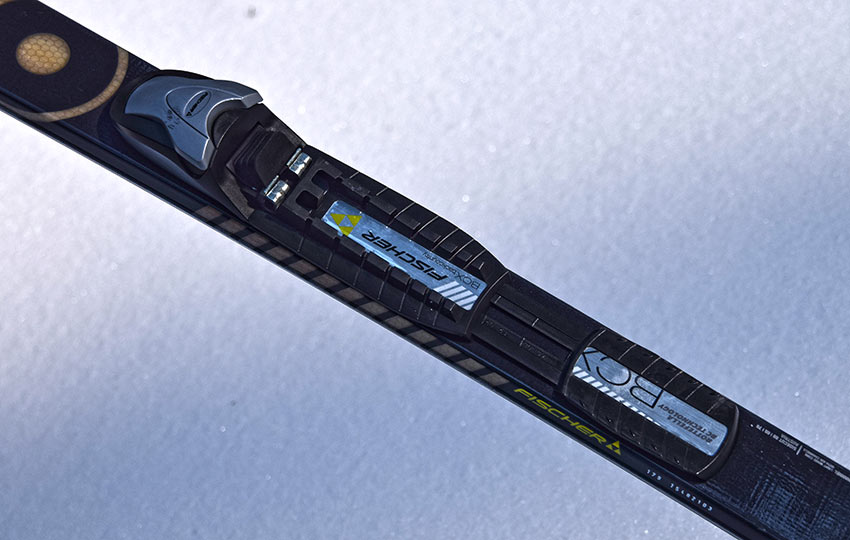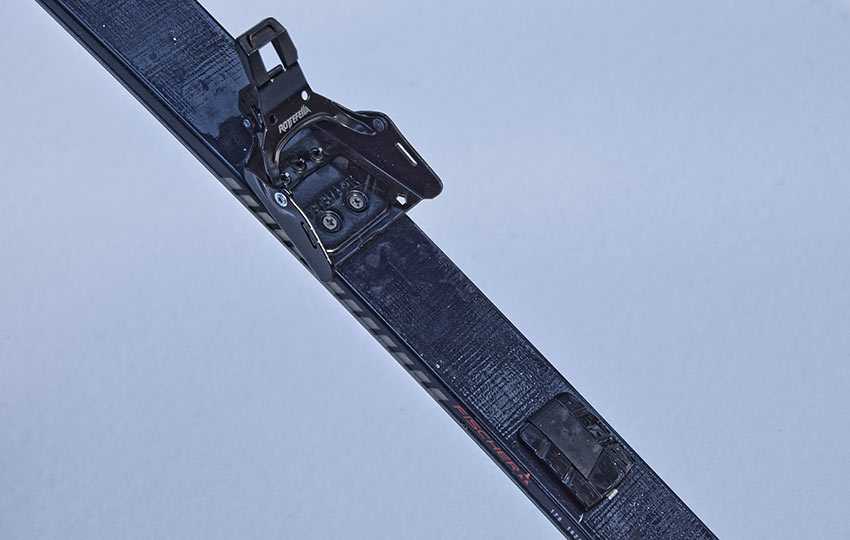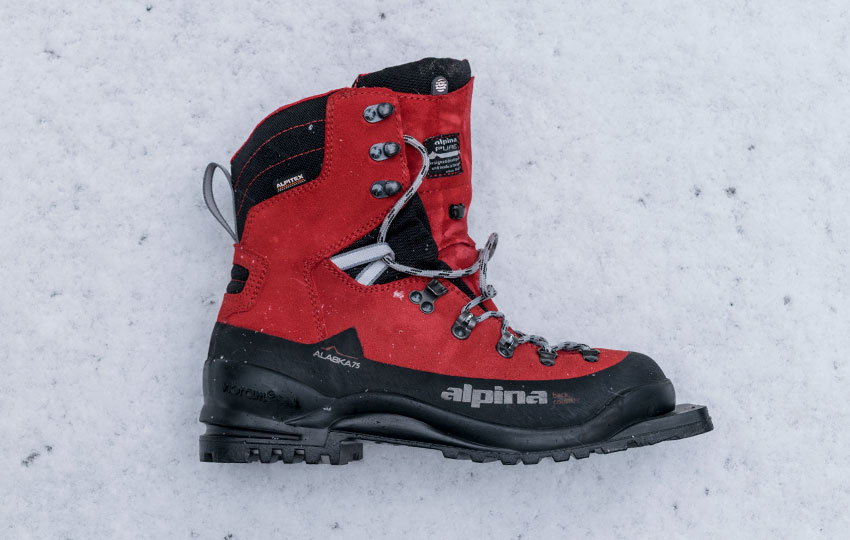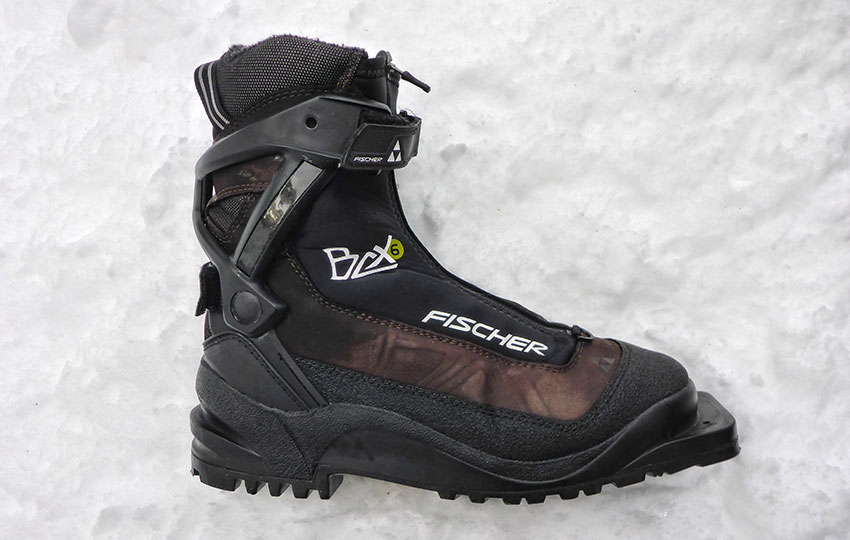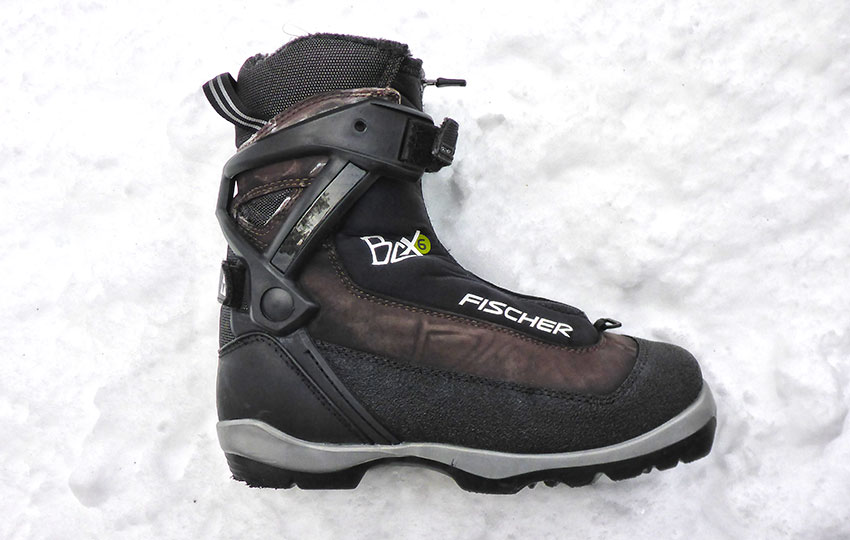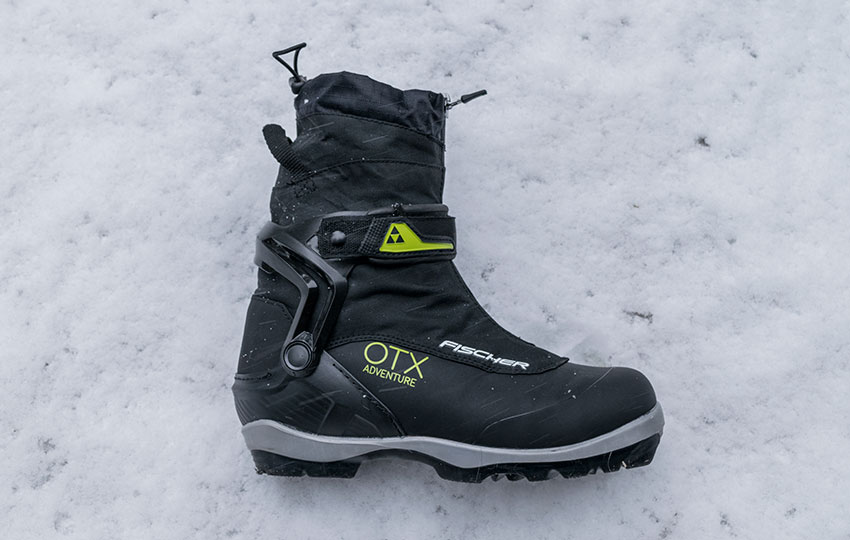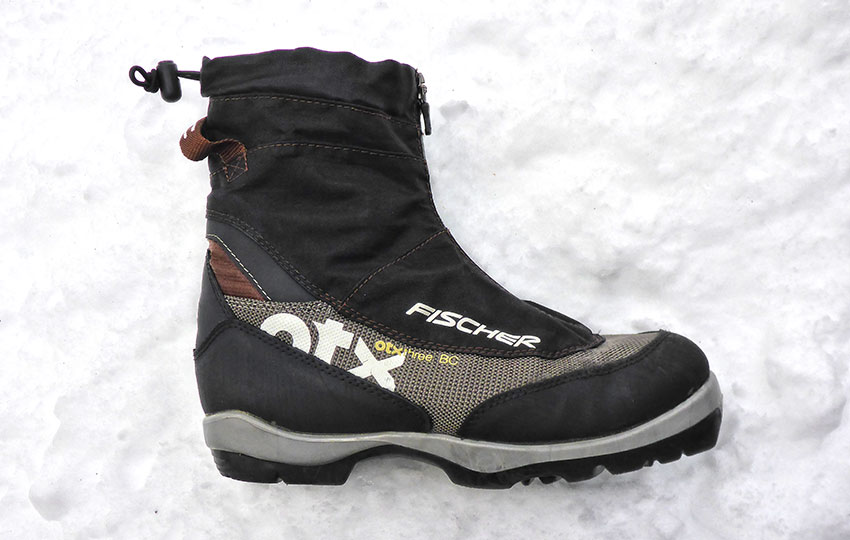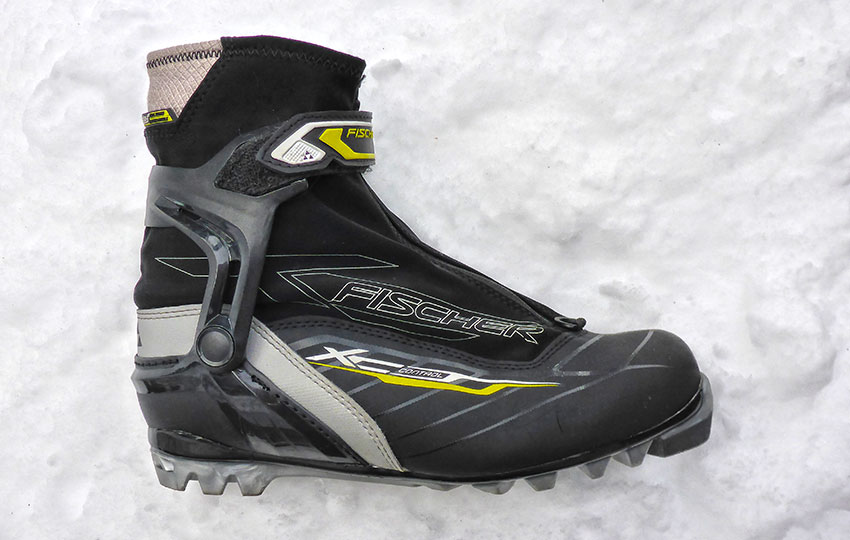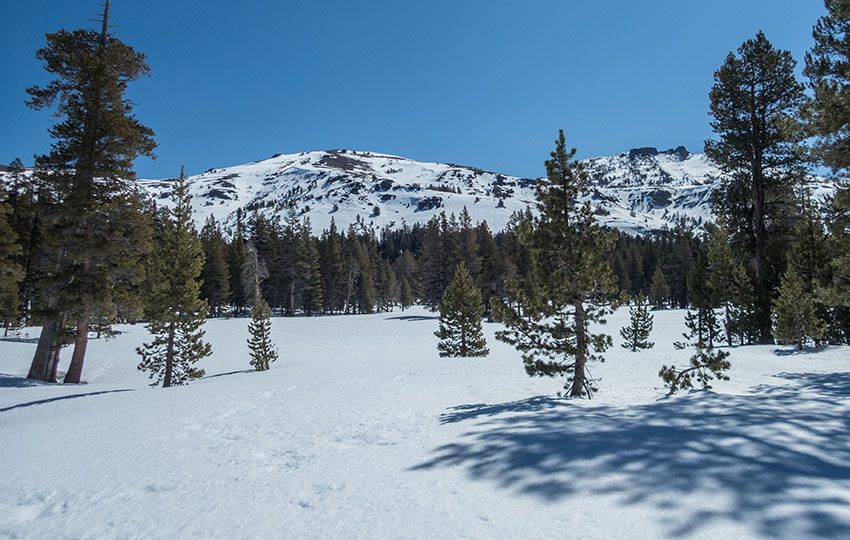
Cabin fever can affect the best of us during the winter. So, many people feel an inherent need to get outside and explore the world around them when the snow starts to accumulate. Traveling into the backcountry via cross-country skis can fulfill this desire in so many ways. Whether you’re an athlete who wants a strenuous workout or a birder who just wants to make your way through the forest to find some winter species at your local park, backcountry cross-country skiing is your ticket.
There are obviously many other reasons that people would be interested in cross-country skiing off-trail. Some of them include:
- No groomed cross-country ski trails nearby
- Explore locations inaccessible in warmer months
- Exercise and embrace a healthy lifestyle
- Get away from civilization
There are very few groomed cross-country ski areas close to my home (in South Lake Tahoe, CA). So, I take the opportunity to ski off-track and in the backcountry whenever possible. I love the exercise and exploration that off-trail skiing affords me. I also appreciate that I don’t have to deal with crowds and lift lines when backcountry cross-country skiing.
Support Tahoe Trail Guide with a financial contribution via PayPal (single contribution) or Patreon (reoccurring contributions). Your support of Tahoe Trail Guide is very much appreciated!

All of that said, this style of xc skiing does require a setup more aligned with the task at hand. So, I offer this general overview of, what I believe to be, its most relevant gear.
Although this article is far from being absolute and 100% comprehensive, it should get you in the ballpark if you’re considering making the transition to a full-fledged winter adventurer!
Features of Backcountry and Off-Track Cross-Country Skis
There are a few key aspects that differentiate backcountry cross-country skis from classic xc skis designed for use on groomed terrain. I’ll discuss each feature in greater detail following the list.
- Wide
- More Sidecut
- Metal Edges
- Aggressive Grip Zone
- Short
- Robust Bindings
- Supportive Boots
- Durable and Adjustable Ski Poles
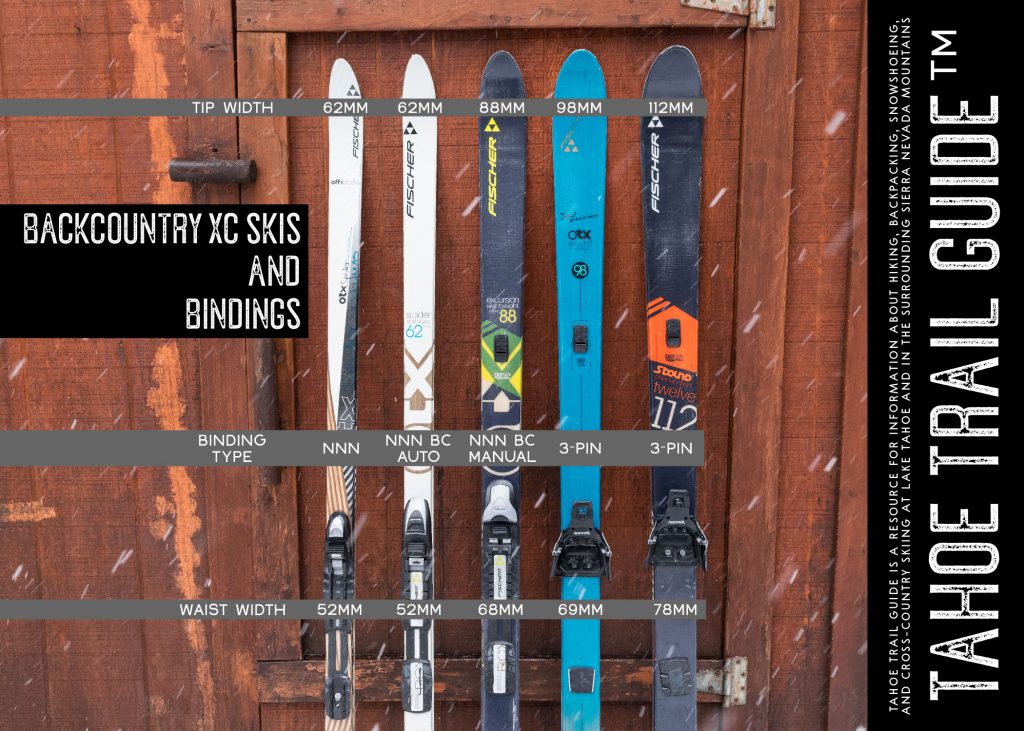
Width of Backcountry Cross-Country Skis:
The width of off-track and backcountry cross-country skis is one of the most obvious traits that differentiate it from classic track skis.
Backcountry cross-country skis are a lot wider than groomer-oriented skis. Although you can find models as narrow as 60mm (tip width), most backcountry xc skis range in width from 70-100mm (tip width). Occasionally, you’ll find skis that reach widths of up to 125mm (tip width). However, those really wide cross-country skis are challenging to find nowadays. Fischer doesn’t appear to make or sell the S-bound 125mm anymore. Currently, their widest backcountry cross-country ski tops out at 112mm.
For your reference, classic track skis are typically no wider than 40-55mm (tip width).
As you might imagine, a wider ski will bear weight more effectively in deeper snow. This is why we own backcountry skis – to venture off the beaten path! But, like any tool, even backcountry cross-country skis have their limitations.
- Off-track and backcountry cross-country skis that are between 60-70mm can’t handle much more than a few inches of fresh snow. Therefore, I use my skinniest off-track skis (62mm) for spring-like conditions where the snow is firm and consolidated. Or, I’ll use them at the beginning of the winter when there’s very little snow on the ground.
- Varieties of backcountry xc skis between 70-100mm wide are functional in fresh snow from about 4-8 inches deep. Again, the wider the ski the more snow it can handle.
- Lastly, my S-Bound 112mm skis can maintain decent flotation in fresh snow between 8-10 inches. Once the new snow exceeds ten inches, I’m essentially running a pair of cross-country snowshoes with those S-Bound 112s.
Generally, you can float better in snow deeper than what your skis would normally handle (on the flats) so long as the angle of terrain on which you’re skiing is steep enough. But you’ll most likely have to travel to and from that steep angle of terrain on flat or rolling terrain.
So, dial back your expectations if you think you’re going to fly across lots of new snow on those wider skis. You’re still in for a hard workout!
Backcountry Cross-Country Skis are Comparatively Thin
Tied to its width is the fact that backcountry xc skis are thinner (depth-wise) than classic track and skate skis. Compare their profiles and you’ll see that backcountry skis are nearly half as thick as groomer skis. This leads to a softer camber, but because the ski is so wide it can still bear your weight adequately.
One reason I wanted to mention this is that if you choose to mount your own bindings onto your backcountry xc skis, you need to use a shorter collared bit to drill the holes. This is in contrast to the longer drill bit required for mounting bindings onto classic track skis and skate skis.
So, for mounting bindings to an off-track or backcountry xc ski, you’ll want to use a 3.6x9mm collared drill bit. On the other hand, use a 3.6×14.5mm collared drill bit for mounting bindings to groomer-oriented skis. All of that said, double and triple check that this is accurate for your specific set of bindings and skis before you actually start drilling!
Note about Wide Skis on Hard-Packed Snow
A wide backcountry xc ski won’t necessarily make you more stable in all snow conditions. A lot of people blame their lack of stability on cross-country skis based on the narrowness of the skis. I can understand this to some degree. However, wide skis don’t automatically equate to stability.
For example, running wide skis on firm and icy terrain is absolutely frustrating. There are a couple of reasons for this. The first is that a wide ski is just more ski in which you have to manipulate in order to engage its edges. And since it has a broader gliding surface, it can more easily slip and slide laterally.
Directly tied to your ability to control a wider ski is the fact that even backcountry varieties of cross-country ski boots are still relatively soft. Therefore, subtle movements to engage the edges of your skis (to prevent lateral slip) are often absorbed by the boot.
This whole frustrating experience is most evident on flat terrain. Trying to keep those wide skis traveling in a straight line on hard-packed and icy terrain is downright difficult. This is why I run my skinniest backcountry skis in those conditions. This is also why running a set of classic track skis on groomed terrain is ideal as opposed to using backcountry xc skis on the same trails. Again, up to a point (like around 60mm), wider skis are just going to be harder to control in firm snow conditions.
Also keep in mind that the tracks at a groomed xc ski area are no wider than 70mm. So as your ski’s width gets close to that 70mm mark, you’ll find that your skis “pinch” in the tracks. This is especially true when traveling around corners.
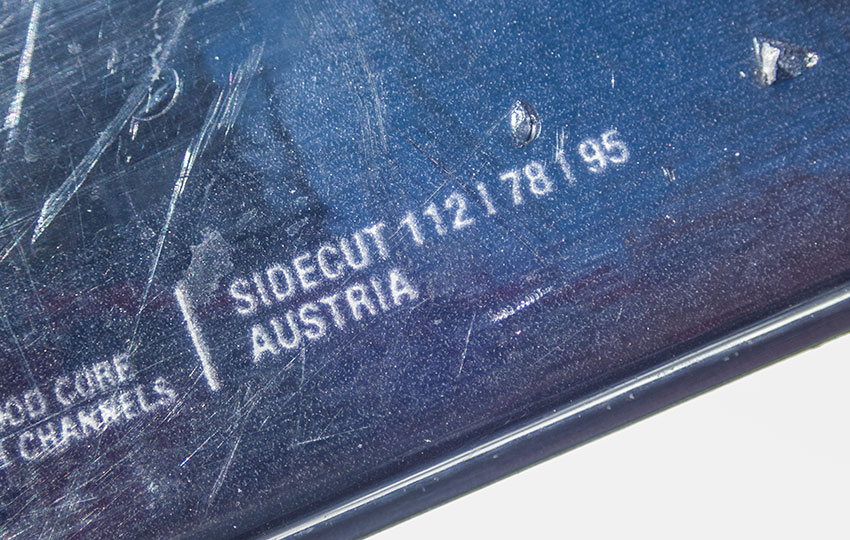
Sidecut of Backcountry Cross-Country Skis
Related to a backcountry cross-country ski’s width, is its sidecut.
Sidecut is the variation in width along the length of the ski. This variation is measured at three points on the ski, which are the tip, waist, and tail. And, it’s expressed in a numerical sequence (often printed on the ski’s top sheet) such as 98-69-88.
So, the aforementioned skis have a 98mm tip, 69mm waist, and an 88mm tail. This means that the skis are wider up front, taper to their narrowest point under your foot, and then flare out at the back of the ski.
This matters because more sidecut translates to better downhill turning potential. For example, with a curvy ski (i.e. more sidecut) you can make shorter and quicker turns. This is why classic track skis and skates skis are so challenging to turn on the downhills. They’re long and straight and, therefore, designed to be run in long, straight lines (i.e. not for carving downhill).
But even with a modest sidecut, backcountry cross-country skis are a far cry from parabolic-shaped alpine skis. So, you’re not going to be carving turns right out of the gate. That said, the sidecut of a backcountry xc ski is definitely more prominent than what you’d find with classic track and skate skis. So, the potential for making some fun downhill turns is there. You just need to develop the appropriate skills.
One note about backcountry cross-country skis is that their curvy shape that helps you make better downhill turns (compared to straight and skinny track skis, for example), will also make it a little more difficult to track them straight on flat terrain. This is because skis typically want to travel along their edges. So, basically, a curvy edge will cause the ski to curve. You can minimize this by landing an absolutely flat ski when diagonal striding, for example. But most backcountry terrain is not going to be perfectly flat so you’re always going to be engaging your edges to one degree or another.
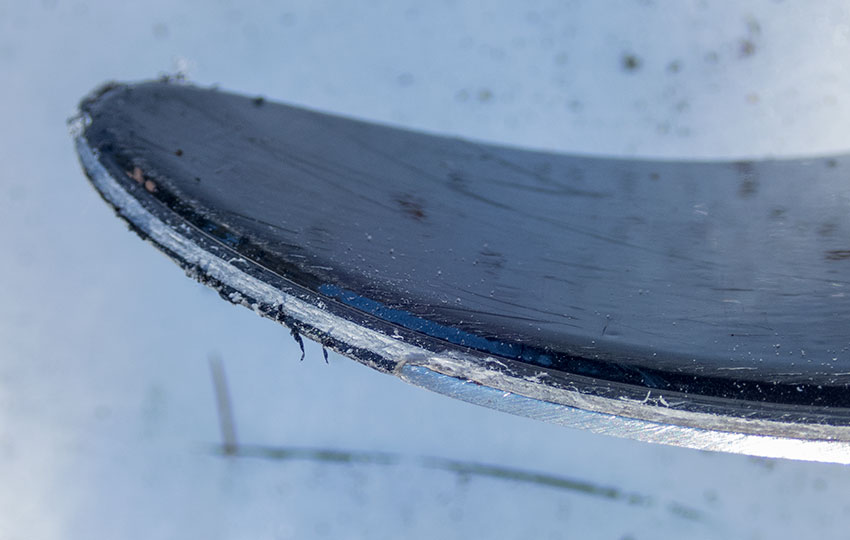
Metal Edges on Backcountry Cross-Country Skis
Since we’re already looking at the backcountry xc ski’s width and sidecut, let’s take a look closer at those edges. Many cross-country skis designed for use in the backcountry feature metal edges. There are multiple benefits to having metal edges on your backcountry xc skis.
The first and most important benefit is that metal edges add durability to your backcountry xc skis. Natural debris such as rocks, roots, and downed trees or branches lurk everywhere in the backcountry. And, often they’re just beneath the surface of the snow. Therefore, the likelihood of you running into, on top of, or alongside an obstacle is considerable.
The metal on those edges will help to prevent catastrophic damage in the event that you do hit a rock, for example. There are no guarantees in the backcountry, but at least those metal edges give you a fighting chance to ski out of the backcountry (instead of walk!).
Another reason metal edges are good is that they provide more control when negotiating hard-packed snow. Because the metal edges are more durable, you can bite into that firm stuff when necessary. Even if you’re just side-slipping down an angle of firm snow, the metal edges offer a layer of protection against sliding out of control.
Those metal edges can provide an advantage when downhill turning due to the increased control that they provide. However, many people mistakenly believe that metal edges will miraculously transform them into exceptional downhill skiers. The reality is that those skis are still going to be really hard to carve unless you already possess exceptional downhilling technique.
Not only are backcountry xc skis still pretty light (all things considered), but you also have to work against their camber. The camber is the arch in the ski that prevents the grip zone from excessively dragging over the snow. The camber also enables you to more effectively diagonal stride. So, when downhilling you have to not only turn the skis but also compress them enough that the edges stay engaged with the snow.
Metal edges are a double-edged sword because occasionally they’ll cause your ski to cut right into the snow (not in a good way). I find this most often to be the case in “breakable crust” conditions. So, without good edge control you can easily catch an edge and/or bury your ski.
Full and Partial Metal Edges
Most backcountry cross-country skis will either have a full or partial metal edge. I’ve never found one to be necessarily better than the other.
Often, a partial metal edge just means that the metal doesn’t wrap around the tips and tails of the ski. But metal still usually covers the length of the ski, nearly to the tip. So, I suspect that partial metal edges are employed simply as a means to save a little weight on the overall ski.
In theory, I imagine that a partial metal edge would be more susceptible to damage or separation (from the ski). However, I’ve never experienced or witnessed this happen. All of my backcountry skis have partial metal edges, and I do run them pretty hard.
There are so many factors to consider when looking at backcountry xc skis. So, my recommendation is that you don’t let the metal edges (full or partial) be a major deciding factor in your selection of backcountry cross-country skis.
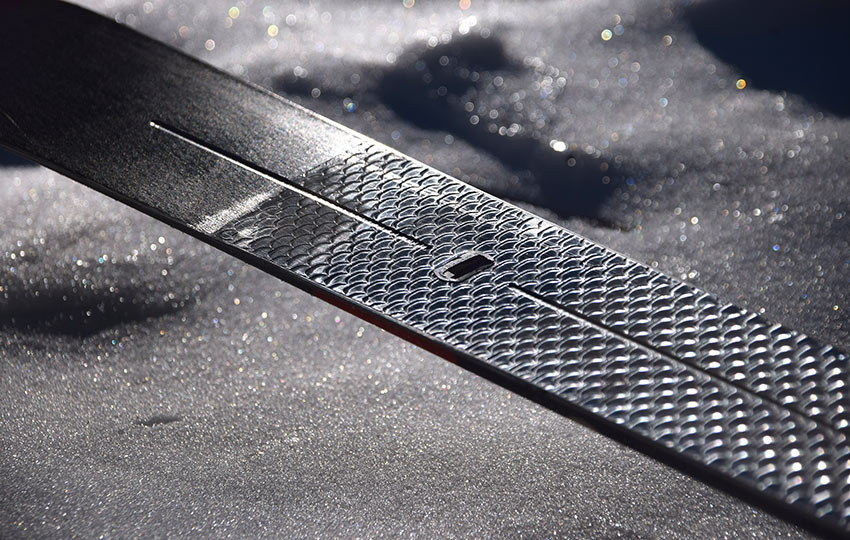
Grip Zone of Backcountry Cross-Country Skis
Let’s flip the ski over and examine its base. Here you can see an aggressive grip zone (on waxless versions of backcountry xc skis) flanked by the tip and tail (glide zones). You may also see a center groove down the base of the ski. Lastly, there might be an option for attaching a skin within the grip zone of the backcountry ski.
The grip zones of off-track and backcountry cross-country skis are particularly aggressive when compared to classic track skis. Generally speaking, the grip zone of a traditional classic ski stops somewhere around the heel and extends about 10 inches beyond the toes. On the other hand, the grip zone of an off-track ski often extends well behind the heel and about 16 inches forward of the toe. That’s a lot of grip zone!
The reason backcountry skis have an aggressive grip zone should be fairly obvious. Backcountry terrain is variable and, therefore, unpredictable! So having better grip allows you to travel more efficiently and effectively in those variable conditions.
Some people believe that the aggressive nature of a backcountry ski’s grip zone will drag excessively. And that this will cause them to slow down, especially on descents. I’ve never really found this to be the case. Even when diagonal striding, I achieve plenty of glide.
Sure, the scale-patterned grip zone adds friction to the mix. In fact, you can usually hear the scales dragging slightly as you glide downhill. However, I find any decrease in speed, especially when going downhill, to be negligible.
Obviously, having a completely uniform gliding surface for the ski’s base would be faster and easier to turn downhill. But in the case of backcountry cross-country skiing, I don’t want to have to stop my flow to remove (descents) and then adhere (ascents) a set of climbing skins. I want the ability to seamlessly climb and descend, and the aggressive grip zone allows me to do that.
No matter what, it’ll always take more effort to run a backcountry cross-country ski. The grip zone is not the only deciding factor. The skis are heavier (increased fatigue), have more sidecut (squirrelly), and wider (pushing more snow with the leading edge).
However, they’re a different animal operating in different environments. And, backcountry xc skis work great going uphill, downhill, and on the flats. In my opinion, technique is the deciding factor as to whether or not the skis work well. So if you don’t know technique, the skis won’t work nearly as well as if you did know technique.
Skin-Tech Options for Backcountry Cross-Country Skis
My Fischer Excursion 88mm and S-Bound 98mm/112mm feature an option for attaching a proprietary technology called an “ez-skin.” Other manufacturers of off-track and backcountry skis, such as Asnes, offer similar quick-on/quick-off climbing skin options. Basically, these skins are partial in length and adhere within the grip zone to give you extra grip on ascents and when dealing with icy terrain.
Keep in mind, however, that many backcountry skis that use quick skins don’t actually feature a native grip zone on their skis (like the scale-patterned Fischer skis). The bases of those other skis are essentially 100% glide zone. So, you either have to use grip wax and/or the quick skin system in order to travel on flats and uphill.
Also note that the partial-length skins don’t offer as much grip as a full-length skin, obviously. That said, some manufacturers do offer a full-length skin that you can fix to the base of your backcountry cross-country ski. As such, this is similar to an Alpine touring ski or Telemark ski.
Note about the Center Groove
Some backcountry xc ski manufacturers incorporate a center groove into the base of their skis. This groove helps the ski track straighter when diagonal striding and double-poling. Basically, the center groove creates a straight ridge of snow on which the ski will run. The quality of snow will affect how much the groove keeps your ski tracking straight. But even in relatively firm snow, you can still find evidence of that center groove at work when you examine your tracks.
All of that said, because the center groove causes the ski to travel straight you have to work against it in order to turn your skis more easily when downhilling.
Length of Backcountry Cross-Country Ski
In general, backcountry cross-country skis are shorter (for your weight) than classic track skis. Most manufacturers of off-track skis typically only offer 3-5 different lengths. And, generally, those lengths range from about 165cm to 195cm.
A shorter ski enables you to move more easily in unpredictable conditions, just like you’d find in the backcountry. You’re always going to be faced with natural obstacles such as shrubs, tree stumps, branches, roots, rocks, and other vegetation that’ll conspire to grab your skis and trip you. So, shorter skis are just easier to manage in this hazardous environment.
All of that said, even backcountry cross-country skis are not that short. For example, based on my weight I use 179cm length skis in Fischer’s line of off-track and backcountry cross-country skis. But for a better quality, dedicated track ski, I typically use a 192-197cm length ski. So, in the grand scheme of things, that 1-2 centimeters of difference between the two styles of skis is not that much. But every little bit counts in the backcountry, so I’ll take the shorter ski!
Backcountry Cross-Country Ski Bindings
When mounting a binding to a backcountry cross-country ski, I believe the best way to choose the appropriate binding is to find one commensurate in size. Basically, you don’t want a small binding on a really big backcountry ski. At the same time, I don’t recommend mounting a really big binding on a skinnier off-track ski.
Realistically, however, there are only a few options of bindings that you’ll want to consider for your backcountry xc skis.
- NNN (primarily for groomer-oriented xc skis, but can be used on the skinniest of off-track xc skis)
- Auto version of NNN BC (standard backcountry xc ski binding that’s good for use on skis up to about 85mm wide)
- Manual/Magnum version of NNN BC (more robust and slightly larger than the auto version, and is good for use on skis between 80-100mm wide)
- 3-Pin (old standard for xc skis, but now is usually reserved for the widest backcountry xc skis)
- XPlore system (lightweight Alpine touring style of binding great for downhilling)
I tend to prefer the NNN BC Manual and basic 3-pin (no cable) option for my wide backcountry cross-country skis. They afford enough connection to the ski, but they’re not so excessive that I can’t run them naturally. Essentially, both options enable me to diagonal stride and do some downhill turning without having to think too hard about either task.
Admittedly, though, I tend to diagonal stride way more than doing downhill technique even when I’m in the backcountry. Yes, I love to ski downhill but most often I’m either traveling on the flats or uphill so I generally prefer bindings that allows me to stride like I was on a traditional classic track ski.
The only real issue that I have with the auto version of the NNN BC binding is that its spring is really stiff. If you find yourself on soft, deep snow and have to take your skis off, it can be challenging to click back into the binding. What happens is that instead of clicking in, you wind up pushing the ski further into the snow. And, in the event that you do fall down, it can also be challenging to unclick from the binding manually (i.e. pushing the release button with your hand).
The manual version of NNN BC, on the other hand, gives you more control over getting in and out of the binding. And, manual bindings are usually a tighter fit and easier to clean out (if they become filled with snow and ice). Although, they can sometimes be challenging to manipulate with really cold fingers and hands.
Backcountry Cross-Country Ski Boots
There are countless off-track and backcountry cross-country ski boots from which to choose. Some are more stiff than others, providing better control for downhill turning but make diagonal striding less efficient (than a softer boot). Some backcountry boots come with upper cuffs and a thick gaiter. Others don’t feature any upper ankle support and only have a thin gaiter attached to it to keep the snow out.
I choose which boots to wear based on the snow conditions or what I’m planning to do in my ski session.
For example, I’ll choose a simpler, softer boot when dealing with a consolidated snowpack (i.e. I won’t be traveling through deep snow). On the other hand, I’ll wear a more robust set of boots with upper ankle support for deep snow. I’ll also wear a stiffer boot when I’m planning to just go and find a hill on which to practice downhill turning.
Ultimately, however, the biggest challenge to finding the right boots is finding one that fits comfortably. If, at all possible, try on the boots that you’re hoping to buy before spending your money.
Every brand and style fits a little bit differently. I have really wide feet, so I prefer to wear Fischer brand boots which tend to be the widest brand on the market. That said, it’s probably not as much of an issue to find boots assuming you’re feet are generally normal.
Backcountry Cross-Country Ski Poles
As a general principle, I always recommend using aluminum ski poles for use in the backcountry. They’re generally more durable and dependable compared to poles made of carbon fiber and other composite materials.
For example, it’s somewhat difficult to actually snap an aluminum pole in half. Often they’ll bend, which you can then bend back relatively easy. But carbon fiber and composite poles will snap completely. Even if you do snap an aluminum pole, however, you’d still be able to make some use out of it as a mini-pole or splint. At worst, the broken shaft(s) would pack safely in your backpack compared to a splinter-riddled carbon fiber pole (which has no function once broken).
Adjustable poles with full baskets are best in deep snow. But they can be slightly irritating to use when diagonal striding on firm snow. This is because of the angle at which you should be holding the pole when striding. Basically, that full basket can make contact with the snow before the ski pole tip. This will cause the basket to skid back and you won’t get any bite into the snow with the tip. This is somewhat of a minor point, but it’s something that I consider when choosing my equipment for the day. If it is firm snow, I’ll just take with me a dedicated pair of off-track poles (fixed length and bigger basket).
Keep in mind that adjustable backcountry ski poles are typically designed for Alpine touring, not necessarily cross-country skiing. Therefore, they’re not going to extend much longer than 145cm. So if you’re taller than 5’8″, for example, and you’re hoping to diagonal stride in the backcountry, adjustable poles most likely won’t be long enough for you. I say this for all of you who hope to only own one set of poles. Buy adjustable poles for use in deep snow. But also pick up a pair of correct-length-for-you classic poles with a wider basket for use on firm and hard-packed snow.
More gear, I know, but this is experience talking.
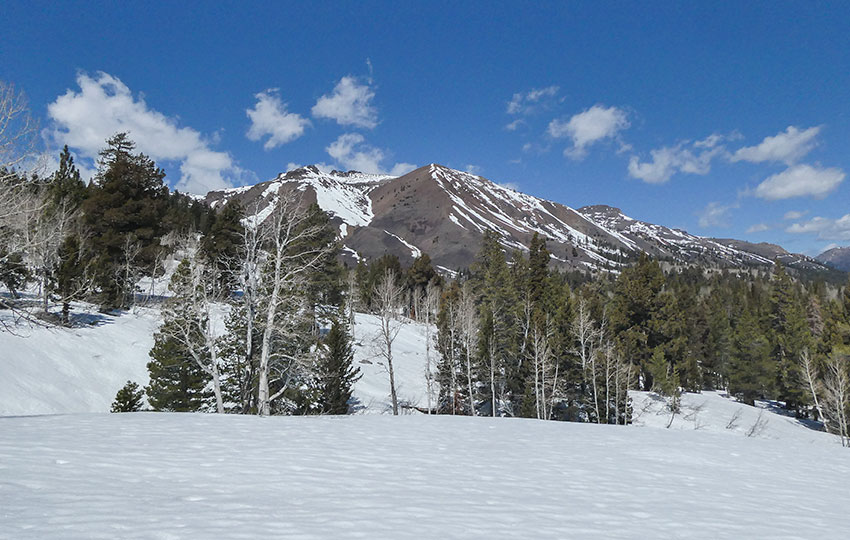
Final Thoughts (for the time being!)
Backcountry cross-country skiing is a blast! In reality, however, it’s not that much different from classic cross-country skiing at a groomed resort. Most of the same classic technique that you’d use on groomed terrain is the same for the backcountry. However, a lot of people don’t embrace this concept. Instead, they treat the backcountry experience as a step up from snowshoeing. They’ll basically snowshoe with their skis, but then be able to glide downhill (instead of walking as you would with snowshoes).
But backcountry cross-country skis are also designed for diagonal striding. So consider implementing that into your experience. I can’t emphasize enough just how much more enjoyable your experience will be when you’re able to zip around the mountains and meadows.
Many of my YouTube videos and Tahoe Trail Guide articles are about classic cross-country skiing, particularly in a backcountry environment. So take a look if you really want to maximize your backcountry experience!
Cross-Country Downhill #ad maybe slightly dated (published c. 1987), but it provides some wonderful philosophy about cross-country skiing off the beaten path.
There’s also a lot of technical information regarding learning the Telemark turn on lighter cross-country touring gear. Highly recommended for those of you looking to cross-country ski in the backcountry.
Keep in mind, however, that this book is written with a more advanced mountain adventurer in mind. Follow the Amazon link and you should be able to find a used copy.
Cross-Country Skiing Explained Articles and Videos
Please note that I wrote and produced the Cross-Country Skiing Explained series of articles and videos with the beginner and intermediate cross-country skier in mind. This is the demographic for whom I most often serve(d) while working in the outdoor recreation industry at Lake Tahoe. I basically treat these articles and videos as extensions of the conversations that I have (had) with those customers.
That said, expert skiers probably could take away something of value from these resources. Just know that I don’t address race-oriented philosophy, technique, or gear selection.
Considerations for buying cross-country ski gear (new and beginner xc skiers)
- Intention, Types of XC Skis, and Whether to Buy New or Used (Part 1)
- How Much Gear to Acquire, Evaluate Your Commitment, Value of Taking XC Ski Lessons (Part 2)
- Can One Set of Classic Cross-Country Skis Work for Groomed and Off-Track XC Skiing? (Part 3)
- Can I Use One Set of XC Ski Boots for All of My Cross-Country Skiing Needs? (Part 4)
- Overview of Off-Track and Backcountry Cross-Country Ski Gear
- Invest in Technique More than Gear
Classic Cross-Country Ski Components
- Introduction to Classic Cross-Country Skis (Part 1)
- Geometry of Classic Cross-Country Skis (Part 2)
- The Grip Zone of Classic Cross-Country Skis (Part 3)
- Types of Bindings for Classic Cross-Country Skiing (Part 4)
- Ski Boots for Classic Cross-Country Skiing (Part 5)
- Classic Cross-Country Ski Poles (Part 6)
- FAQs about Classic Cross-Country Skiing
Waxing Your “Waxless” Cross-Country Skis (for beginner and intermediate xc skiers)
- Introduction to Waxing Your Waxless XC Skis
- Step-by-Step Waxing Tutorial
- FAQs About Waxing Your Waxless XC Skis
Cross-Country Skiing Techniques, Demonstrations, and Related Concepts
- Outdoor VLOG (emphasis on the cross-country skiing experience)
- Cross-Country Skiing in Challenging Conditions
- Considerations for Winter Adventure in Lake Tahoe’s Backcountry
- Using the Side-Step and Herringbone Techniques in the Backcountry
- 10 Tips for Spring Cross-Country Skiing in the Backcountry
- 5 Reasons to Love Spring Cross-Country Skiing
- Considerations for Cross-Country Skiing During the Fall and Early Winter
- Discussing the Goal of Becoming a Better Cross-Country Skier and Embracing Backcountry and Groomed Terrain in Pursuit of that Goal
- The Cross-Country Skiing Experience: Immersing Yourself in Winter
